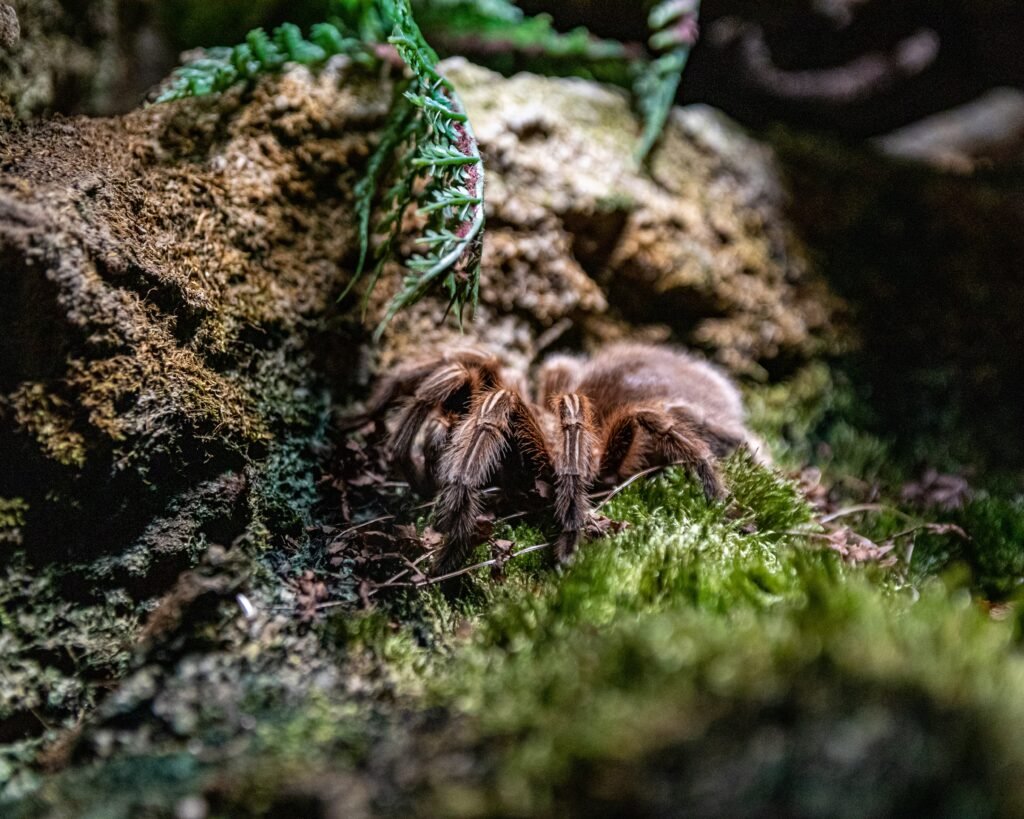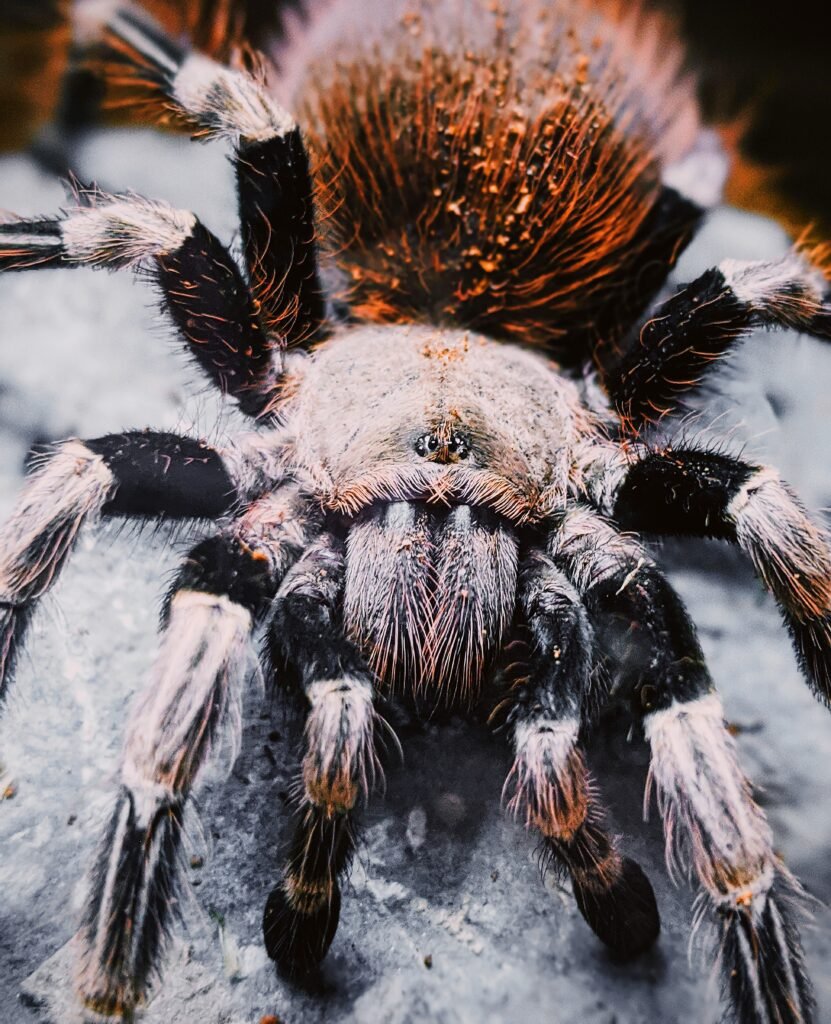Have you ever wondered whether tarantulas should be kept together in groups or if they are better off housed individually? This article explores the intriguing question of whether these fascinating creatures can thrive in social settings or if they are more suited to a solitary lifestyle. With insights into their behavior, habitat, and expert advice, you’ll discover the pros and cons of both options and gain a better understanding of what is best for these captivating arachnids.

The Nature of Tarantulas
Tarantulas are fascinating creatures that belong to the family of spiders (Arachnida). With their impressive size and unique appearance, they have become popular pets among arachnid enthusiasts. Understanding the nature of tarantulas is crucial when deciding whether to keep them in groups or house them individually.
Social Behavior of Tarantulas
Contrary to popular belief, tarantulas are not entirely solitary creatures. While they are not naturally social animals, there are some species that exhibit certain social behaviors. These behaviors can range from mild social tolerance to complex interactions within a group. However, it is important to note that not all tarantulas possess these social tendencies.
Territoriality of Tarantulas
Tarantulas are known to be territorial creatures. They establish their own territories, which they defend against intruders. This behavior is more pronounced in species that are not communal. Tarantulas mark their territories using silk and scent, creating a boundary that deters others from entering their space. It is this territoriality that often leads to aggression and cannibalistic behavior, especially when tarantulas are housed together.
Differences Between Species
One must take into consideration that not all tarantulas are the same. There are over 900 known species of tarantulas, each with its own unique characteristics, behaviors, and care requirements. Some species have been observed to be more social and tolerant towards conspecifics, while others are highly aggressive and territorial. It is vital to research and understand the specific species before deciding whether to house tarantulas in groups or individually.
Advantages of Keeping Tarantulas in Groups
While it is generally safer to house tarantulas individually, there are certain advantages to keeping them in groups under the right circumstances.
Social Interaction
One advantage of housing tarantulas in groups is the opportunity for social interaction. In species that exhibit social behaviors, grouping tarantulas together allows them to engage in natural behaviors such as courtship, mating, and even communal nesting. Observing these interactions can provide insight into the natural behavior of these fascinating creatures.
Reduced Stress Levels
Tarantulas, like any other living creature, can experience stress. However, studies have shown that tarantulas kept in groups show reduced stress levels compared to solitary individuals. Being in the presence of conspecifics can provide a sense of security and comfort, ultimately promoting their overall well-being.
Disadvantages of Keeping Tarantulas in Groups
While there are potential benefits to group housing, there are also notable disadvantages that cannot be overlooked.
Increased Risk of Cannibalism
The most significant disadvantage of keeping tarantulas in groups is the increased risk of cannibalism. Tarantulas have been known to cannibalize each other, especially when they are hungry, stressed, or feel threatened. This behavior can be particularly prevalent if the tarantulas are not well-fed or if there is limited space within the enclosure. Cannibalism is a serious concern that must be taken seriously when considering group housing.
Space Requirements
Another challenge of housing tarantulas in groups is the need for adequate space. Tarantulas require a specific amount of personal space to establish their territories. When multiple tarantulas are housed together, the enclosure must be large enough to accommodate the needs of all individuals. Insufficient space can lead to increased aggression, stress, and ultimately, cannibalistic behavior. It is crucial to provide enough room for each tarantula to establish its own territory.
When Can Tarantulas Be Housed in Groups?
While group housing can be challenging, there are specific situations where it is possible to house tarantulas together successfully.
Communal Species
Some tarantula species exhibit communal behavior in the wild. These species have evolved a higher level of social tolerance, allowing them to coexist harmoniously in groups. Examples of tarantula species known to be communal include Aphonopelma chalcodes, Avicularia avicularia, and Pamphobeteus antinous. When considering group housing, it is crucial to choose species from this category.
Similar Size and Temperament
When housing tarantulas in groups, it is important to select individuals of similar size and temperament. This reduces the risk of aggression and cannibalism within the group. Keeping tarantulas with similar needs and behaviors ensures a better chance of success in maintaining a harmonious group dynamic.

When Should Tarantulas Be Housed Individually?
In many cases, it is safer and more practical to house tarantulas individually. There are certain circumstances in which individual housing is strongly recommended.
Solitary Species
Many tarantula species are solitary by nature. These species prefer to live and hunt alone, with minimal interactions with conspecifics. Solitary tarantulas have a higher chance of displaying aggressive behaviors when housed together, leading to injuries or fatalities. Examples of solitary species include Poecilotheria regalis, Hapalopus species, and Xenesthis immanis.
Varying Size and Aggressiveness
Housing tarantulas of varying sizes and aggressiveness together poses a significant risk. Larger tarantulas may view smaller ones as prey, leading to potential cannibalism. Similarly, aggressive individuals might attack and injure more docile individuals. It is essential to ensure that individuals housed together are well-matched in terms of size and temperament to minimize potential conflicts.
Basic Guidelines for Keeping Tarantulas in Groups
For those who wish to attempt group housing, it is crucial to follow these basic guidelines to promote the well-being of the tarantulas:
Providing Adequate Space
As mentioned earlier, providing enough space is essential when housing tarantulas in groups. The enclosure should be spacious enough to accommodate the needs of all individuals, with ample hiding spots and retreats to establish territories. Additionally, providing multiple food and water sources can help reduce competition and aggression within the group.
Proper Feeding and Nutrition
Feeding tarantulas in a group requires careful attention to ensure all individuals receive an adequate food supply. It is important to monitor feeding times and the amount of food provided to prevent aggression and promote equal distribution of resources. Offering a variety of prey items can also help meet the nutritional needs of all individuals.
Monitoring Group Dynamics
Regular monitoring of group dynamics is crucial to identify any signs of aggression, stress, or cannibalistic behaviors. Observation allows you to intervene promptly if necessary and make adjustments to the enclosure or group composition, if needed. Constant vigilance and proactive management of the group dynamics are essential for the well-being of the tarantulas.

Recommended Tarantula Species for Group Housing
While caution must be exercised when housing tarantulas in groups, there are some species that have been observed to coexist successfully. Here are a few tarantula species recommended for group housing:
Brachypelma albopilosum (Curly Hair Tarantula)
Curly Hair Tarantulas are known for their docile nature and social tendencies. They have been observed to live peacefully in groups, making them a popular choice for group housing among tarantula enthusiasts.
Theraphosa blondi (Goliath Birdeater)
Goliath Birdeaters, often considered the largest spiders in the world, can also be housed in groups. While they are not as sociable as some other species, under the right conditions, they can coexist peacefully.
Grammostola pulchripes (Chaco Golden Knee)
The Chaco Golden Knee tarantula is a species known for its calm and docile temperament. They have been observed to tolerate each other’s presence and can sometimes even construct communal burrows, making them a suitable choice for group housing.
Conclusion
In conclusion, the decision to house tarantulas in groups or individually depends on several factors. Understanding the social behavior, territoriality, and differences between tarantula species is crucial in making an informed decision. While group housing can provide social interaction and reduced stress levels, it also comes with the risks of cannibalism and space requirements. It is important to carefully consider the species, size, and temperament of the tarantulas before attempting group housing. Following basic guidelines and recommendations for group housing can promote a successful and harmonious coexistence among tarantulas, enhancing the experience of keeping these extraordinary creatures as pets.

